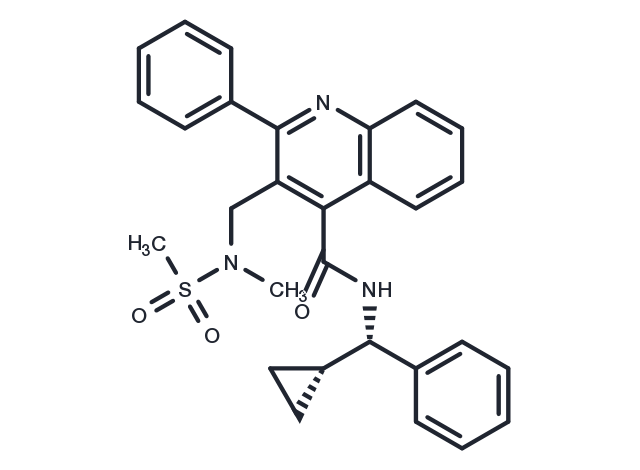Powder: -20°C for 3 years | In solvent: -80°C for 1 year


GSK256471 is a potent selective NK(3) antagonist that shows a high affinity for recombinant human (PK (I) value 8.9) and native guinea pig (PK (I) value 8.4) tachykinin NK(3) receptors. In vitro functional assessment showed that GSK256471 reduced the E(Max) response induced by neurokinin B, indicating insurgable antagonist pharmacology (PA (2)=9.2). GSK256471 may be a promising candidate for the treatment of schizophrenia.

| Pack Size | Availability | Price/USD | Quantity |
|---|---|---|---|
| 25 mg | 8-10 weeks | $ 2,120.00 | |
| 50 mg | 8-10 weeks | $ 2,780.00 | |
| 100 mg | 8-10 weeks | $ 3,700.00 |
| Description | GSK256471 is a potent selective NK(3) antagonist that shows a high affinity for recombinant human (PK (I) value 8.9) and native guinea pig (PK (I) value 8.4) tachykinin NK(3) receptors. In vitro functional assessment showed that GSK256471 reduced the E(Max) response induced by neurokinin B, indicating insurgable antagonist pharmacology (PA (2)=9.2). GSK256471 may be a promising candidate for the treatment of schizophrenia. |
| Synonyms | GSK 256471, GSK-256471 |
| Molecular Weight | 499.62 |
| Formula | C29H29N3O3S |
| CAS No. | 1133706-08-7 |
Powder: -20°C for 3 years | In solvent: -80°C for 1 year
You can also refer to dose conversion for different animals. More
bottom
Please see Inhibitor Handling Instructions for more frequently ask questions. Topics include: how to prepare stock solutions, how to store products, and cautions on cell-based assays & animal experiments, etc.
GSK256471 1133706-08-7 GSK 256471 GSK-256471 inhibitor inhibit
